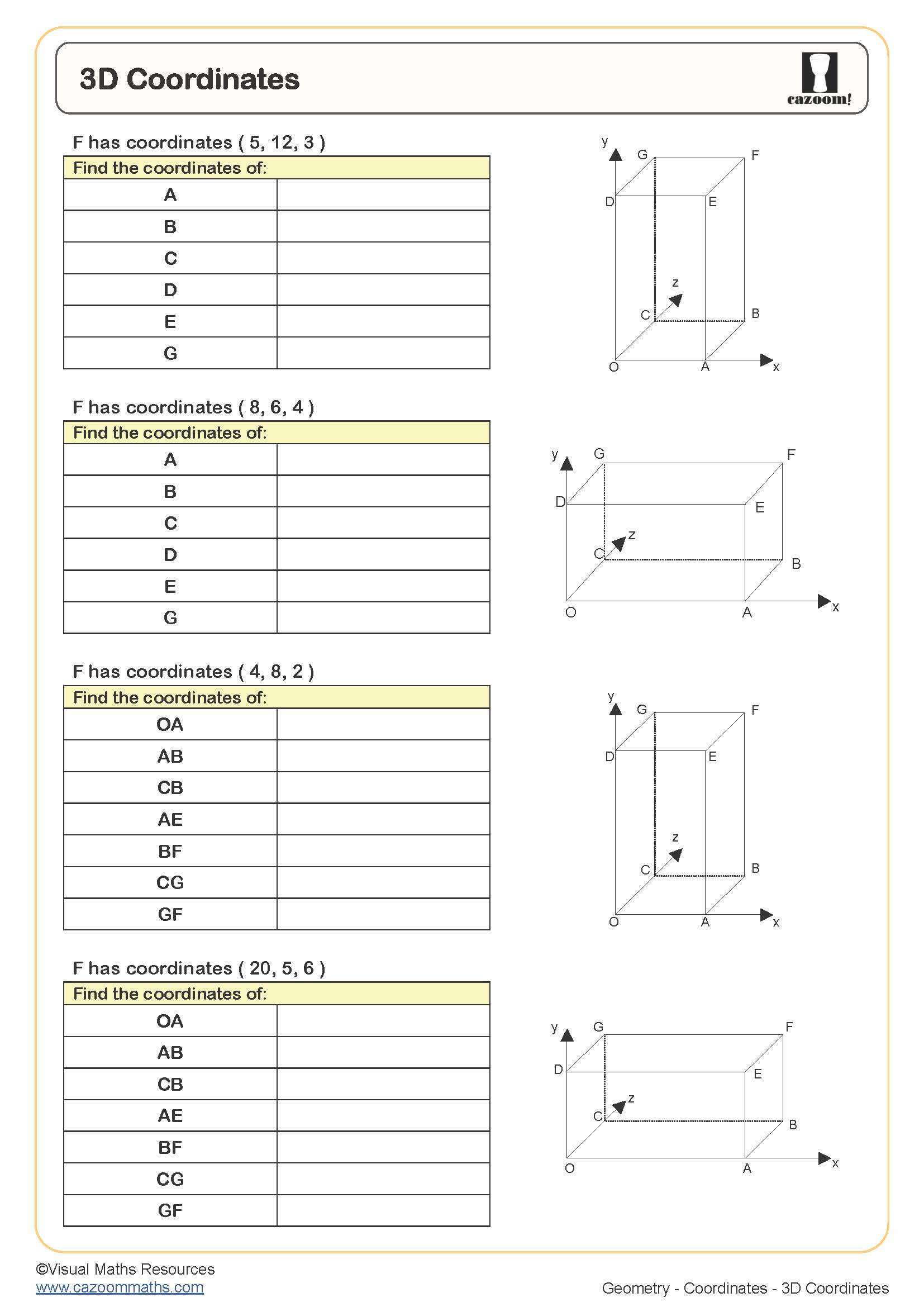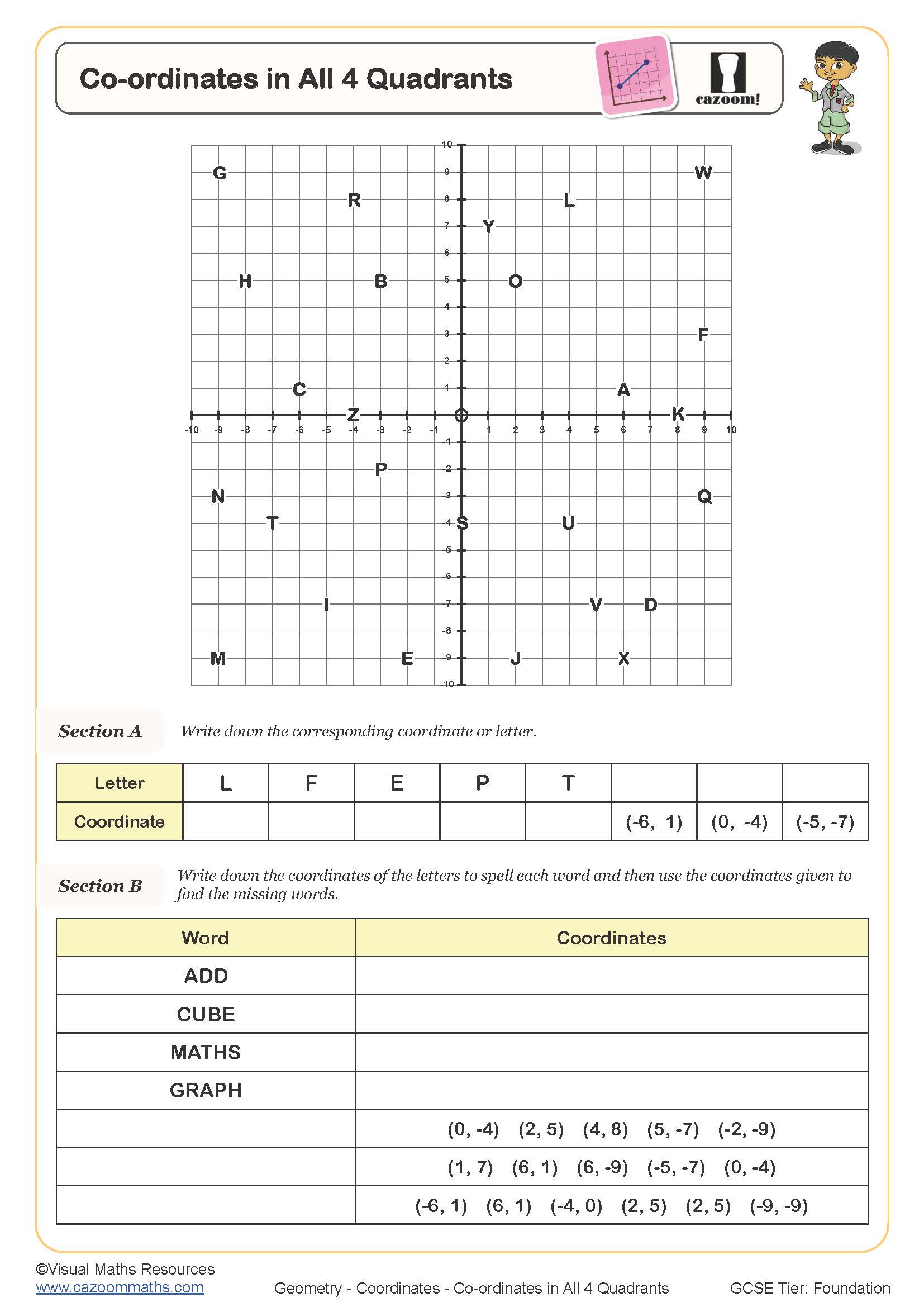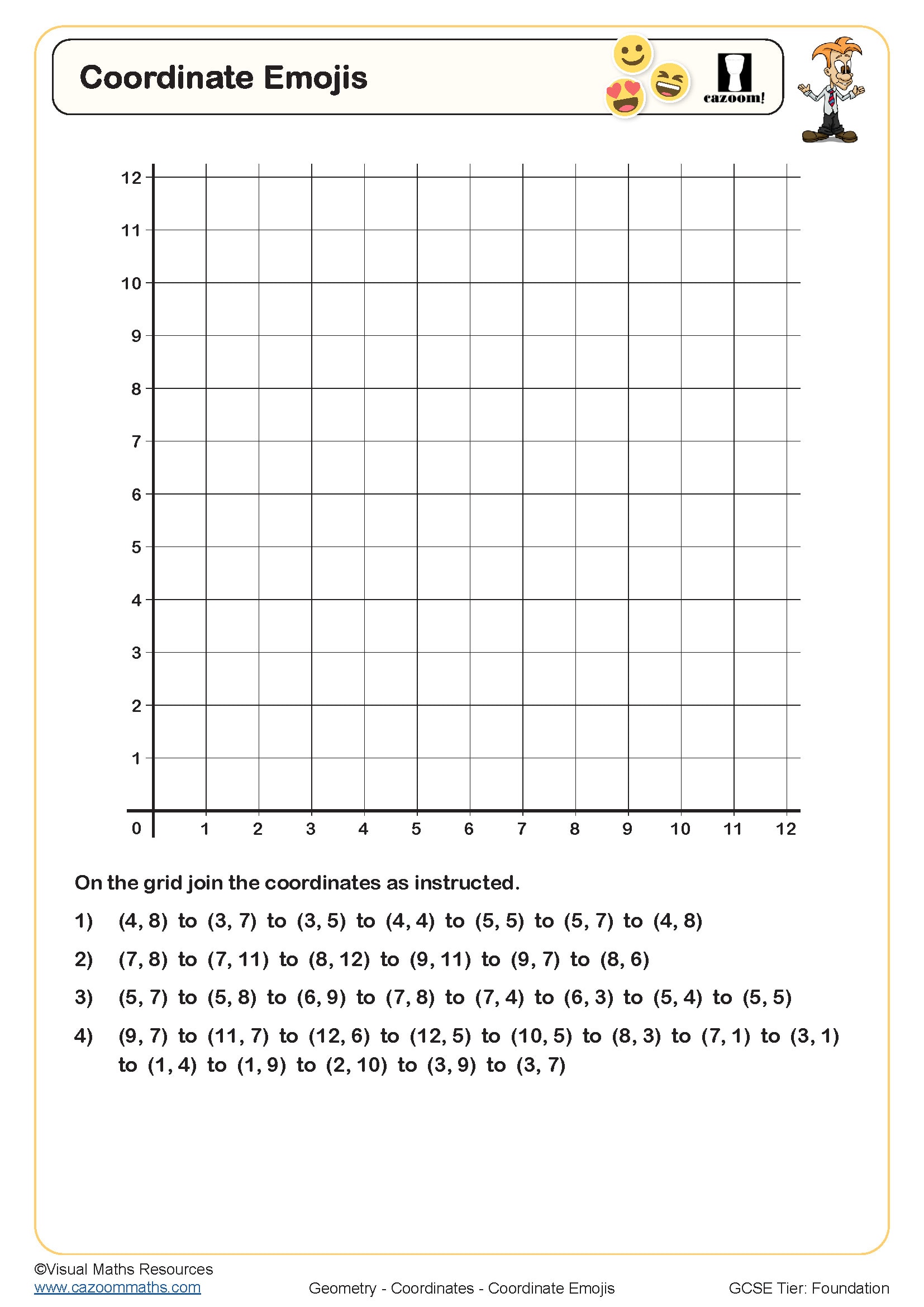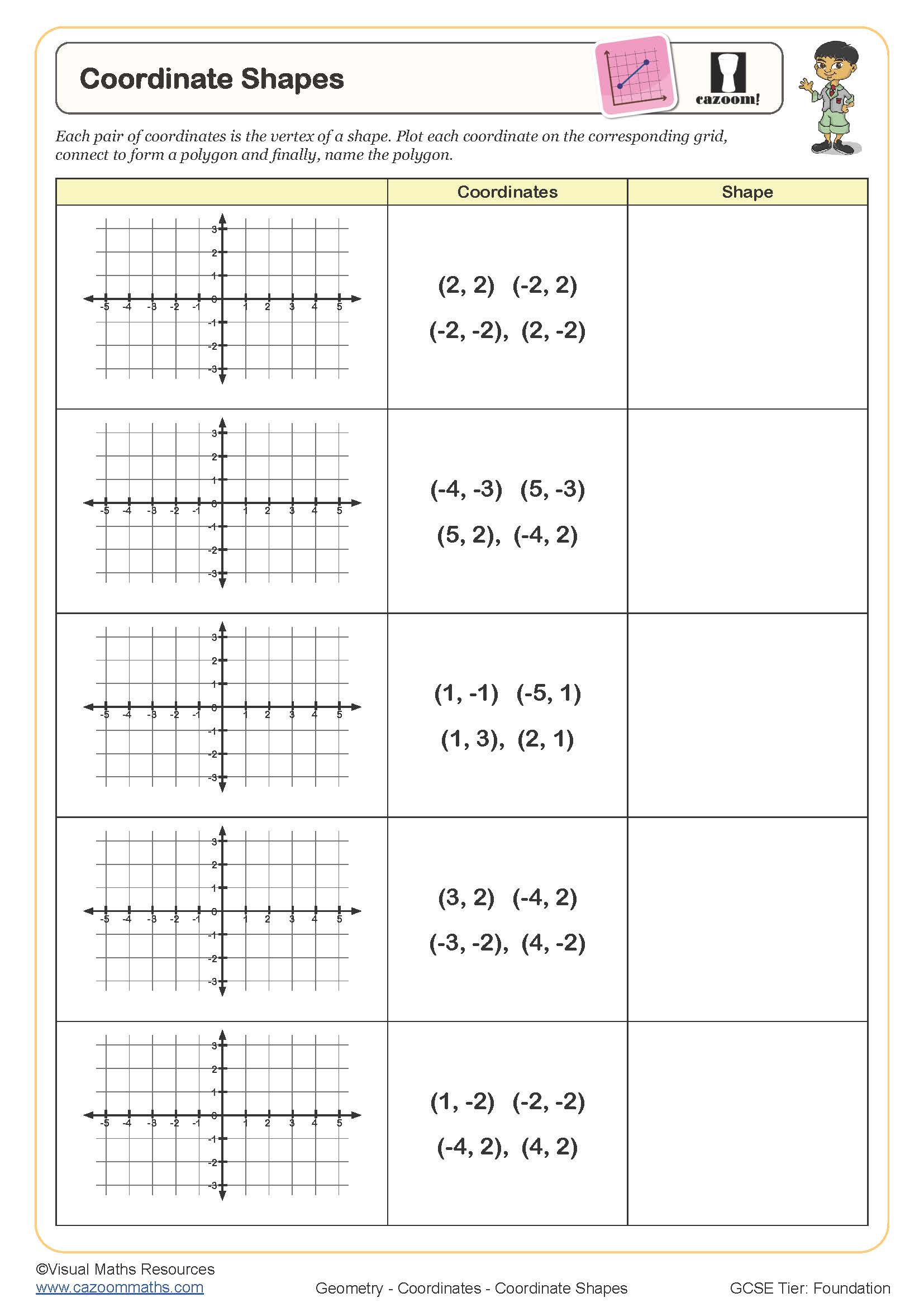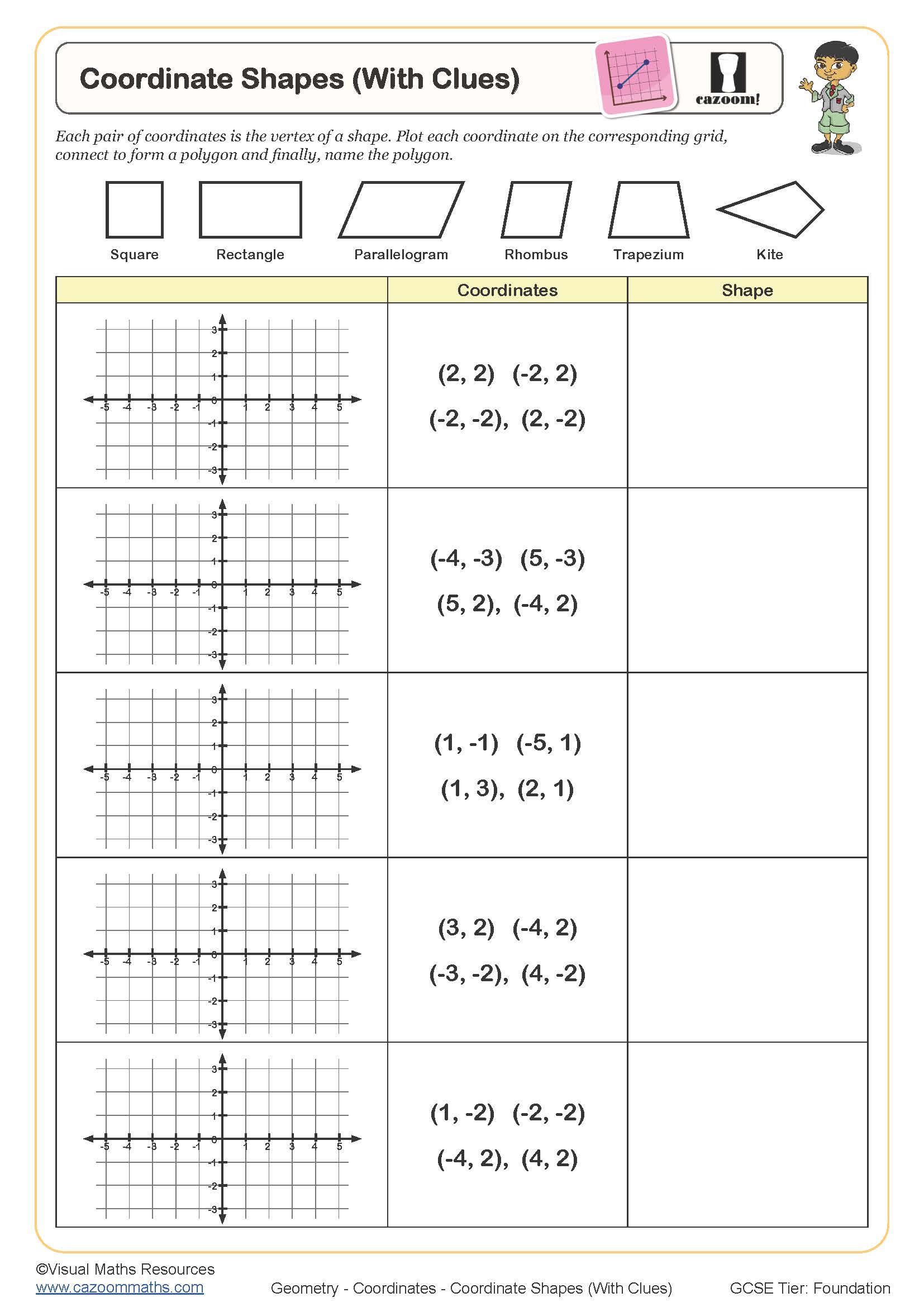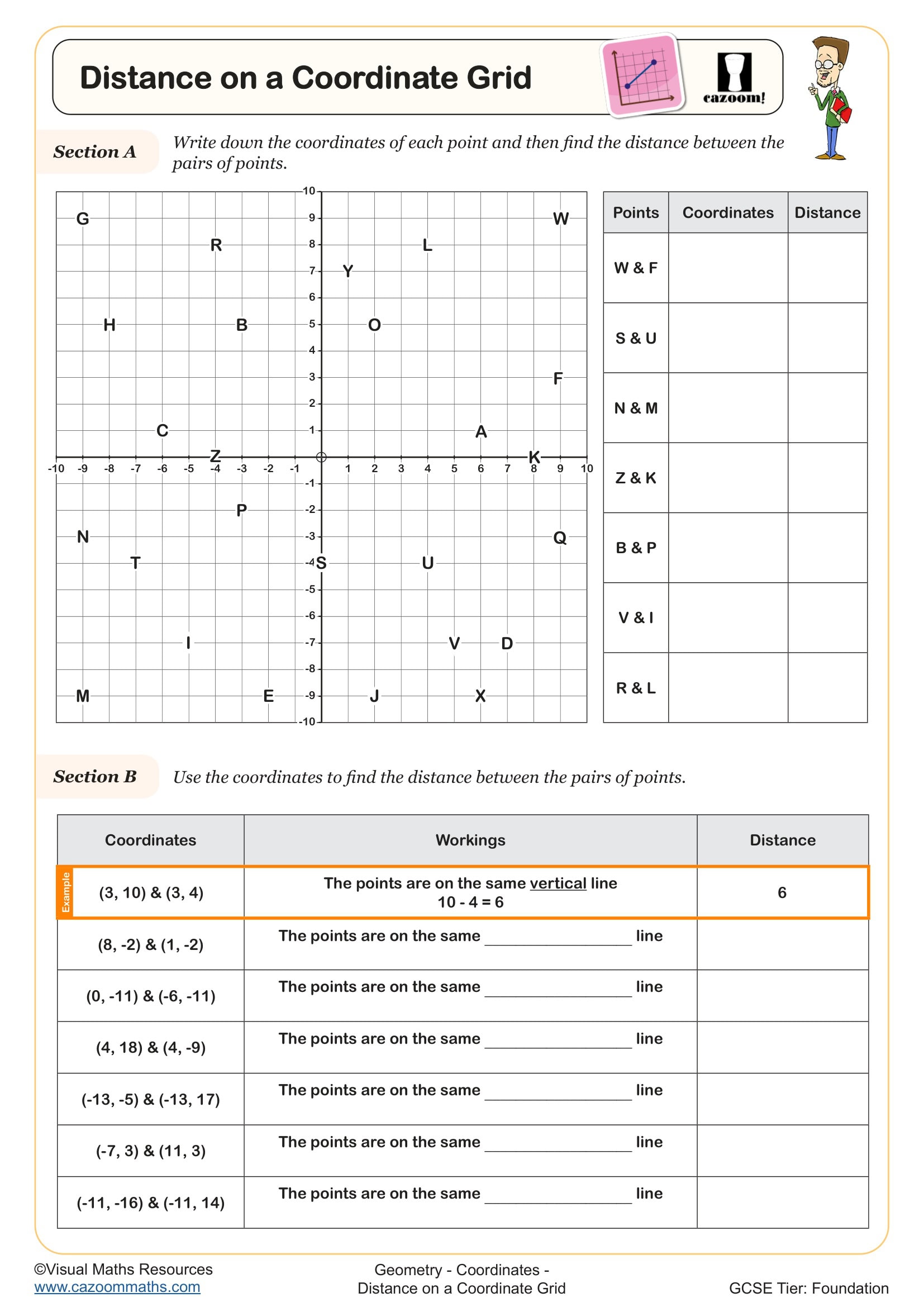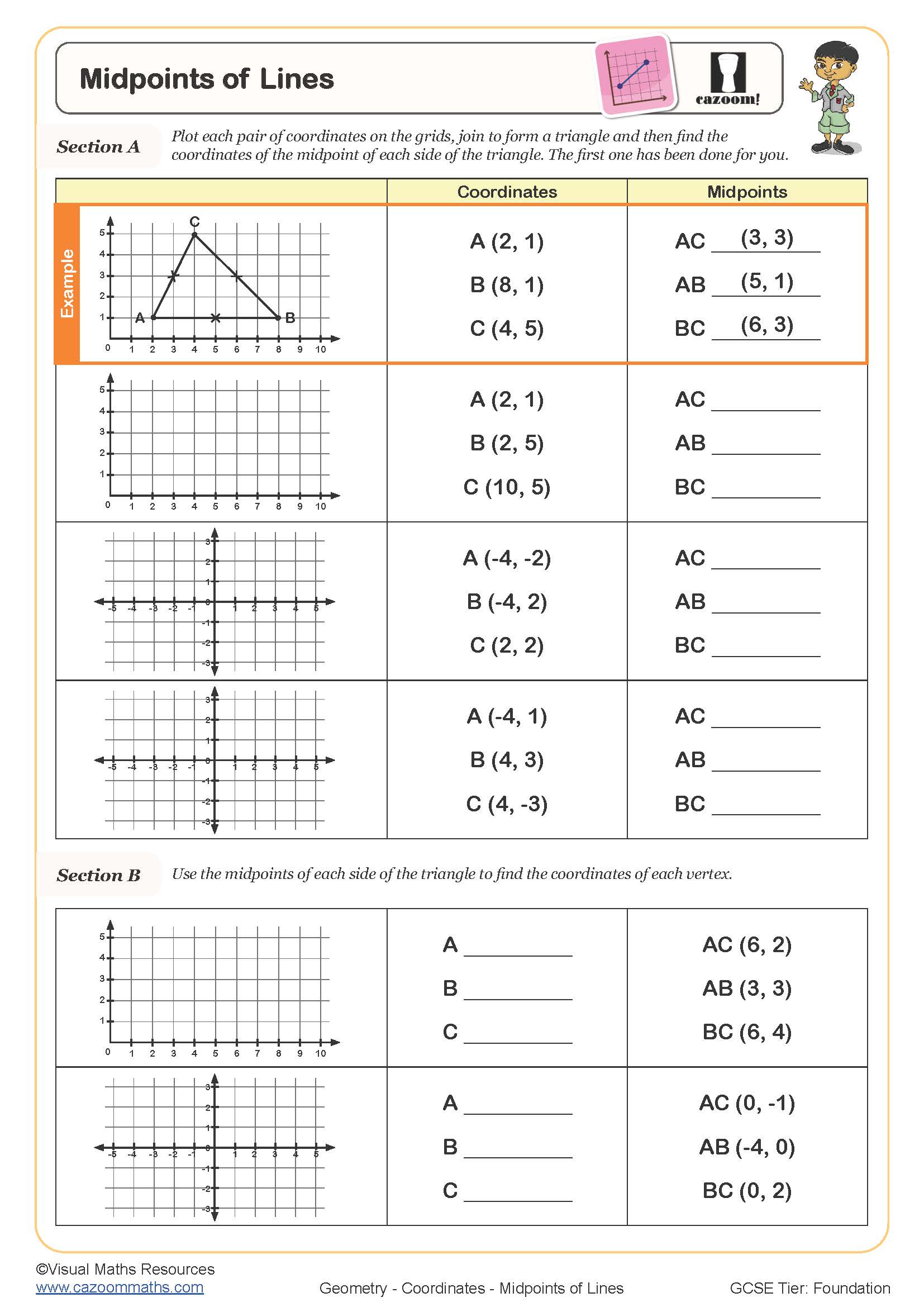Year 7 Coordinates Worksheets
Coordinate Worksheets PDF Downloads That Build Mathematical Confidence
Our Cazoom Maths expert team has observed that advanced geometry skills can be confusing for your young students as they transition from KS2 to KS3. However, without learning these basic geometry equations properly, your secondary school students will face difficulties. To make this learning process smooth and convenient, we have created our worksheets in ready-to-use, printable PDF format. Each of these worksheets includes separate answer sheets to facilitate an easy checking process. Download our maths activities right now to provide the extra help your young learners need!
Essential Coordinate Skills These Worksheets Develop
What is Coordinates?
Coordinates are simply a way to describe exactly where something is located on a grid or map using two numbers. Let us take an example, think of this concept like giving someone directions to a chosen place- in this case, the first number will tells you how far to go sideways, and the second number will tells you how far to go up or down.
We have packed quite a lot into these worksheets on coordinate geometry! The graphing coordinates worksheet sections are particularly popular with students because they can see their progress visually. We have included coordinate questions that cover reflection, translation, and even simple coordinate geometry proofs that prepare students for GCSE work.
Here are the topics that are included in Cazoom Maths resources-
• 3D Coordinates
• Co-ordinates in All 4 Quadrants
• Coordinate Emojis
• Coordinate Shapes
• Coordinate Shapes (With Clues)
• Distance on a Coordinate Grid
• Midpoints of Lines
Why Year 7 Students Benefit From Regular Coordinate Practice
Teaching coordinates effectively requires consistent practice with immediate feedback. We've noticed that students who work through coordinate problems regularly develop much stronger spatial awareness and number confidence. These worksheet plotting points exercises help students master the fundamental skills they'll need for higher-level geometry. Here's what regular coordinate practice develops:
• Accurate plotting and reading of positive and negative coordinates
• Understanding of the four-quadrant coordinate system
• Confidence with negative numbers in mathematical contexts
• Essential foundation skills for GCSE coordinate geometry
• Improved spatial reasoning and pattern recognition abilities
Real-World Coordinate Applications That Engage Students
Coordinate systems appear everywhere, from map reading and GPS navigation to computer graphics and architectural planning. These practical applications help students understand why coordinate geometry matters beyond the classroom. We've found it's quite satisfying when students start recognising coordinate concepts in their daily lives. Here are key areas where coordination skills prove essential:
• Map reading and navigation systems (OS maps, GPS coordinates)
• Computer programming and game design (sprite positioning, graphics)
• Architecture and engineering (technical drawings, blueprints)
• Art and design (digital graphics, proportional scaling)
• Science investigations (plotting experimental data, graphs)
• Sports analysis (tracking player positions, strategy planning)
